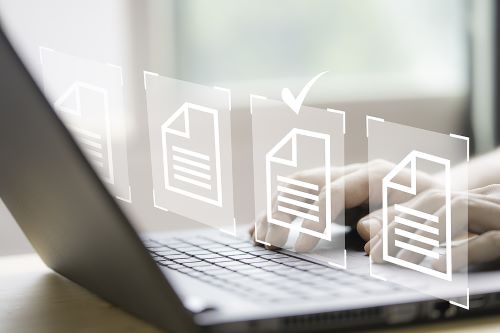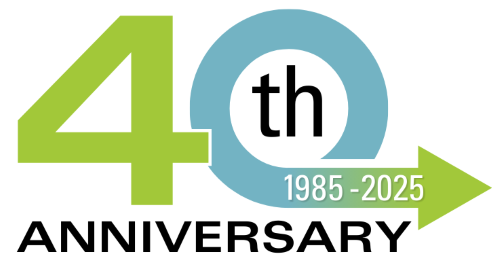Reducing Paper Dependence in the Year Ahead
A Brief History of Paper
The story of paper begins about three thousand years ago in ancient Egypt, where early forms of paper were crafted using rushes that grew along the Nile River. By the 2nd century AD, the Chinese improved upon this method by grinding mulberry bark and cotton to create paper for the emperor. Fast forward another thousand years, and the Moors in Spain introduced paper made from linen and hemp, which soon spread throughout Europe. The invention of the printing press by Gutenberg in 1450 dramatically increased the demand for paper, and by the 1800s, paper production shifted to machines using wood fibers to produce continuous rolls. This revolution in manufacturing made paper more affordable and widely available. Today, around 65% of paper products in America are recycled.
The Modern Shift: Going Paperless
In today’s fast-paced, technology-driven world, businesses are increasingly moving away from paper in favor of digital processes. Going paperless is no longer just a trend; it’s a necessary step for improving efficiency, cutting costs, and supporting environmental sustainability. By reducing or eliminating paper use, organizations are embracing more streamlined operations that save time, space, and resources.
The Benefits of Going Paperless
- Efficiency. Going paperless offers significant improvements in operational efficiency. Digital documents are easier to store, organize, and retrieve than physical files. With digital storage, employees can access information in seconds, which greatly improves productivity. Additionally, workflow automation eliminates manual tasks like filing, searching for papers, and managing documents, allowing businesses to function more smoothly.
- Cost Savings. Paperless systems can significantly cut costs. Expenses related to paper, ink, printers, and filing systems decrease when companies transition to digital solutions. Moreover, physical storage space becomes less of a concern when files are stored in the cloud or on secure servers. Over time, businesses will see a reduction in office supply costs and document management expenses.
- Environmental Benefits. The environmental impact of paper consumption is substantial. Reducing paper use helps preserve trees, conserve energy, and minimize waste, which contributes to a smaller carbon footprint for businesses. Moving to a paperless office can therefore be an effective way to align corporate practices with environmental responsibility.
Challenges of Paper Dependence
- Physical Storage Constraints. Storing physical documents requires significant space, whether it’s in filing cabinets, storage rooms, or warehouses. This setup is not only inefficient but can also become overwhelming over time. A paper-based system can quickly consume valuable office space that could be used more productively.
- Security and Accessibility Issues. Paper documents can be easily damaged, stolen, or lost, posing a significant risk to sensitive information. Physical records are also challenging to access remotely, which can delay decision-making. Securing paper records requires additional measures, such as locking filing cabinets or hiring personnel to manage physical storage, which is not as reliable or efficient as digital systems.
- Resistance to Change. One of the biggest barriers to going paperless is the resistance employees may have to adopting new technologies. Many people are accustomed to paper-based systems and may be reluctant to switch to digital tools, especially if they feel that traditional methods are working fine. Overcoming this resistance requires clear communication and training on the benefits and ease of digital systems.
Assessing Your Organization’s Paper Use
- Identify Areas of High Paper Consumption. The first step to reducing paper use is conducting an audit of your organization’s paper consumption. Determine which areas are the most paper-intensive—whether it’s administrative work, communications, or contracts. This will allow you to prioritize where to start digitizing first.
- Track Paper-Related Expenses. Next, calculate the costs associated with paper, ink, printers, and storage. This will provide insight into the financial burden of relying on paper and can serve as a compelling argument for switching to digital alternatives.
How to Implement Digital Solutions
- Cloud Storage and Document Management Systems. Cloud-based storage is a key component of going paperless. By using cloud solutions, you can store all your documents in one place, easily organize them, and access them from anywhere. This eliminates the need for physical storage space and reduces the risk of document loss or damage.
- E-signatures and Digital Forms. Switching to electronic signatures and digital forms eliminates the need for physical paperwork and signatures. Contracts, invoices, and other documents can be signed online, making the process faster, more secure, and cost-effective.
- Scan and Digitize Existing Documents. Scanning physical documents and converting them into digital formats is another vital step. Optical Character Recognition (OCR) technology can transform scanned images into editable text, making it easier to organize and search through your archived documents.
Changing Habits and Processes
- Encourage Electronic Communication. Encourage both staff and clients to use digital communication tools like email and messaging platforms instead of relying on printed memos or letters. This simple switch can significantly reduce paper usage.
- Utilize Paperless Billing and Invoicing. Switching to electronic invoicing and billing can help streamline financial operations and reduce the need for printed statements and receipts. These digital systems integrate well with other financial tools, improving tracking and reporting.
- Adopt Digital Collaboration Tools. Using platforms like Google Docs, Microsoft 365, or other collaborative tools allows for real-time document editing and sharing. This reduces the need for printed drafts and ensures that teams are always working with the most up-to-date version of a document.
Monitoring Progress and Setting Goals
- Set Paper Reduction Targets. Establish clear goals for reducing paper use within your organization. These goals could include reducing paper consumption by a certain percentage or increasing the number of documents stored digitally. Having specific targets helps keep everyone focused on the paperless transition.
- Regularly Review and Adjust. To ensure that your transition to a paperless system is successful, regularly review your progress and adjust as needed. Monitor paper consumption, gather feedback from employees, and make necessary improvements to your digital workflows.
Reducing paper dependence offers long-term benefits, but it’s essential to take small, manageable steps. Overhauling your entire system at once can be overwhelming, so start with easy wins and gradually build on them.
DataSafe provides comprehensive shredding services to businesses and residents in greater Portland, Oregon and Vancouver metro areas and southern Washington state. For shredding or scanning inquiries or to schedule service, complete the form on this page or call us at: Portland (503) 620-3423 or Vancouver (360) 218-2582.

Get Your Quote
"*" indicates required fields

